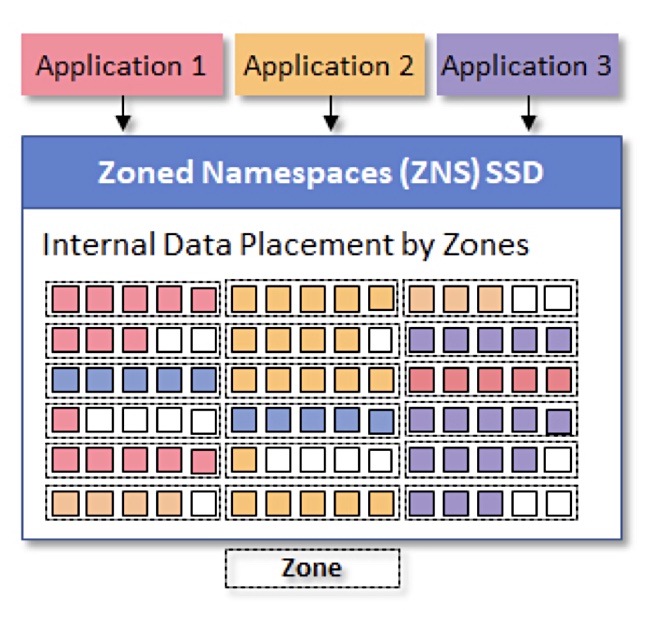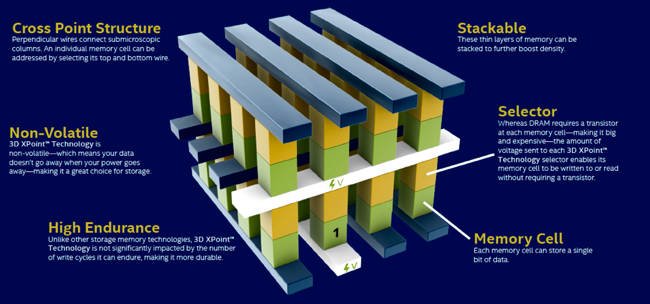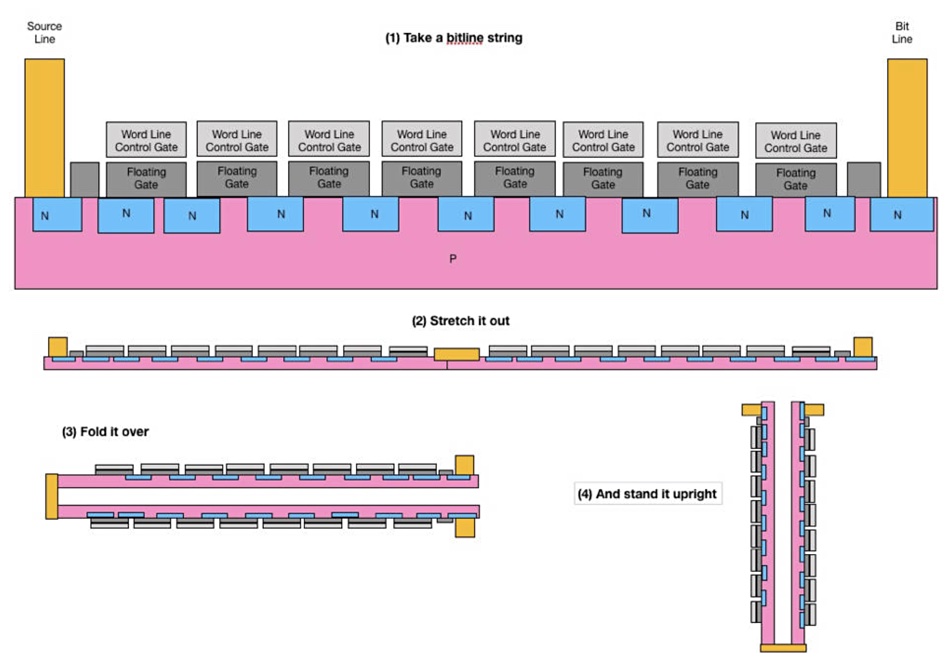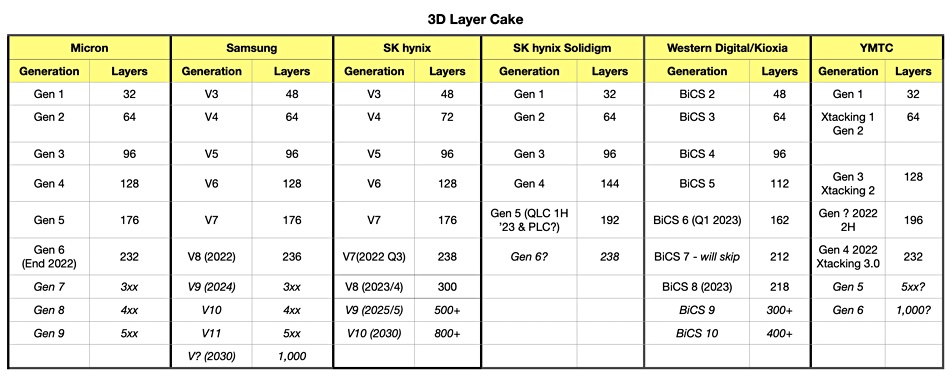Anisotropy – the feature of a material having different directions with different properties when measured on some dimension, such as magnetism with its north and south poles, conductivity, refractive index and more. It is the opposite of isotropy which means omnidirectional.
Air Gap
Air Gap – The physical separation between a storage device and an IT network so that there is no electrical signal connection whatsoever between the two, meaning that the contents of the storage medium cannot be changed. For example, tape cartridges stored in tape libraries are placed in shelves. They are offline in the shelves, and hence air-gapped from any network access. If users need to instantiate a tape backup or restore, then the library gets sent commands, selects and moves a tape cartridge to a drive, and carries out the directed operation. If the tape cartridges are physically removed from the library then they cannot have their contents changed at all.
A virtual air gap is where there is an electrically signalling connection to the storage drive, but it is somehow logically separated from the user’s own IT network so that it is invisible to it and its contents cannot be changed. This is less secure than a physical air gap, as the intermediary organization is connected to the user’s network and could receive commands to alter a virtually air-gapped storage drive’s contents, or the air gapped-data’s access privileges so as to alter its status or contents.
RDMA
RDMA – Remote Direct Memory Access. A technique to load data directly into the memory of a remote device without transiting the source or destination device’s storage IO system. RDMA is much quicker than storage IO which passes through the host system’s operating system IO stack.
Zoned SSD
Zoned SSD – A zoned SSD has its capacity divided into separate namespace areas or zones which are used for data with different IO types and characteristics – read-intensive, write-intensive, mixed, JPEGs, video, etc. Data can only be appended to existing data in a zone, being written sequentially. Typically small writes are aggregated together (batched up) by the zone management software into a 4KB chunk and written in a single operation to the drive. A zone must be erased for its cells to be rewritten. This means unchanging data blocks are not disturbed by deletions of small data items in the same blocks – which would eventually trigger a garbage collection process. This all leads to better flash management and endurance.

AFA
AFA – All-Flash Array, as opposed to an all-disk drive or hybrid SSD/HDD storage array. An all-flash array is a storage array composed solely from SSDs or other NAND drives with no disk drives used at all. Such an array will respond faster to IO requests than disk array because its drives don’t suffer from seek time waits; the period needed for a disk drive’s read-write head to move to the right track on a disk drive and then wait for the disk’s rotation to bring the right track position under the head.
Coercivity
Coercivity – the amount of resistance in a ferromagnetic medium to having its magnetic direction (north or south pole) lost by exposure to an input magnetic field. A disk or tape recording medium with high coercivity will retain its magnetic direction for longer than a low coercivity medium and require more energy in an input magnetic field to become demagnetized.
5G
5G – Fifth generation wireless networking. This is up to 100 times faster than the current 4G broadband cellular network standard used by mobile phones. 5G has been designed to connect machines, objects, and devices together and has higher multi-Gbps peak data speeds, low latency, better reliability, more network capacity, and higher availability than 4G. The five wireless networking standards are;
- First generation – 1G – 1980s: 1G delivered analog voice.
- Second generation – 2G – Early 1990s: 2G introduced digital voice (eg. CDMA).
- Third generation – 3G – Early 2000s: 3G brought mobile data (eg. CDMA2000).
- Fourth generation – 4G LTE – 2010s: 4G LTE (Long Term Evolution) ushered in the era of mobile broadband.
- Fifth generation – 5G – 2020s: an era of widespread higher-speed mobile broadband.
3D Point
3D XPoint – Three Dimensional cross (X) Point is a form of solid state storage cell arrangement with a vertically layered cell located in a two-dimensional space and with data accessed by a crossover of two wires, aka crosspoint. This was the design used in Intel’s Optane storage-class memory chips.

3D NAND
3D NAND – Three dimensional NAND is a flash chip built so that it scales in width, length and height. Originally NAND scaled in just two dimensions – width and length – and was called planar NAND. The 3D NAND concept involves changing the orientation of planar NAND cells to enable layers of them to be stacked inside a die.

The number of layers has increased over the generations of 3D NAND and could ultimately rise to 1,000.

3-2-1 Rule
3-2-1 Rule – The storing of a backup in three separate places to ensure one of the versions can be used to recover the backed up data in case the original data is lost. The 3-2-1 rule says that you should have at least three versions of your backup on two separate media types, one of which should be in a separate location. This protects against drive failure, a media failure and a location failure.
Storage Glossary
This is a storage glossary with entries (terms) linked to explanations. It is more than a storage dictionary but not a storage encyclopaedia. New terms will be added as the industry develops its technologies.
- 3 – 3-2-1 Rule – 3-2-1-1-0 – 3D NAND – 3D X-DRAM – 3D XPoint
- 5 – 5G
- A – ACID – AFA – AGI – Air Gap – Anisotropy – Apache Iceberg – Apache Kafka – Apache Spark – APU – Archive – ASCII – ASI – ASIC – ATA – Autoloader – AWS – Azure
- B – Backup – BaM – BEOL – Binary – Binary and Decimal Prefixes – Binary number – Binary Search Tree – Bit – Bit Line – Block – Blockchain – Blu-ray – Bounce buffer – BPM – B-Tree & B+ Tree – Byte
- C – Cache – CAG – CAMM – CAS – CBA – CD – CDFP – Charge Trap – CHS – CIFS – CMOS – Codec – Coercivity – Composable Systems – Compression – Computational Storage – Container – Copilot – CopprLink – COSI – COW – CPU – CSAL – CSI – CXL – Cylinder Head Sector
- D – D2D – D2D2T – DASE – DDR – DDR4 – DDR5 – DDR6 – Data Lake – Data Mesh – Data Warehouse – Decimal – Decimal and Binary Prefixes – Deduplication – DIMM – Disaster Recovery – DNA Storage – DORA – DPU – DRaaS – DRAM – dStorage – DVD – DWPD
- E – E1.L – E1.S – E3.L – E3.S – EAMR – EB – ECC – EDSFF – Ei – EiB – e.MMC – Endurance – ePMR – Erasure Coding – ESCON – Ethernet – ETL – Exabyte – Exbibyte
- F – FC – FCOE – FC-MAMR – FDP – FEOL – FERAM – Fibre Channel – FICON – File – Filer – Flash – Flit – Floating Gate – FPGA – Fractal Index Tree – FRU – FTL – FTP
- G – GCRAM – GDDR – GDS – Gb – GB – GFS – GiB – Gibibyte – Gigabyte – GPU – GPUDirect – GPUDirect RDMA
- H – HAMR – HB – HBA – HBF – HBi – HBM – HBM3E – HCI – HDD – HDMR – HeLC – Hellabyte – Hellabibyte – High Bandwidth Memory – HLC – Host Bus Adapter – Holographic storage – HPC – HSM – HSMR – Hudi
- I – IaaS – IB – Iceberg – IDE – ILM – IO – InfiniBand – IPFS – IPU – IP – iSCSI – iSER – iWARP
- J – JBOD – JBOF – JEDEC – JSON
- K – K8S – Kafka – Kb – KB – Key Value Store – KiB – Kilobyte – Kilobibyte – Kubernetes – KVCache – KVS
- L – Lakehouse – LAN – LBA – LDPC – LLM – Lock – Logical Block Address – Log-Structured Merge Tree – LPDDR – LRDIMM – LRU – LSM-Tree – LTFS – LTO – LUN
- M – M.2 – MAID – MAMR – MAS-MAMR – Mb – MB – MCP – MCR DIMM – Megabyte – Merkle Tree – Metadata – MiB – Mibibyte – MLC – MMIO – MRAM – MR-IOV – MRM – MR-MUF – MS-SSD
- N – Namespace – NAND – NAS – NDMP – Nemo – NFS – NIC – NIM – NIS2 – NOR – NVMe – NVMe-oC – NVMe-oF – NVMe FC – NVMe KV – NVMe/TCP
- O – OEM – Object Lock – Object Storage – OCP – OPI – OSFP – OSFP-MSA – OSI – Over-provisioning
- P – PaaS – Parquet – PATA – PB – PBBA – PBW – PCIe – PCM – Pebibyte – Phase-Change Memory – PHY – Physical Air Gap – PiB – PIM – PLC – PMR – pNFS
- Q – QLC – QR Code – QSFP
- R – RAG – RAID – RAIL – Ransomware – RAS – RBOF – RDIMM – RDMA – RDMA over IP – Replication – ReRAM – Resilvering – REST – Retrieval Augmented Generation – RLHF – RNIC – Robot – RoCE – ROW – RPO – RRAM – RTO
- S – S3 – SaaS – SAN – SAS – SATA – SCADA – SCM – SCSI – SDS – SDXI – SerDes – Serverless – SFTP – SI Units – Silo – SiPH – SLC – SMART – SmartNIC – SMB – SME – SMR – Snapshot – SNIA – SoC – SOCAMM – SONiC – SONiC-DASH – Spark – SPC – SPEC – SPOF – SRAM – SR-IOV – SSD – STO – Storage Engine – STT-MRAM
- T – Tape – Tape Cartridge – Tape Library – TB – TCP – TCP/IP – Tebibyte – Terabyte – Thin Provisioning – TiB – TLC – Tokens – TRIE – TRIM – TSV
- U – U.2 – U.3 – UALink – UCIe – UDIMM – UDP – UFS – UPS – USB – UUID
- V – VAAI – VADP – Vector Embeddings – Virtual Air Gap – VLAN – vLLM – VM – Volume – VSS – VTL – V-Tree – vVols
- W – WAF – Wear Leveling – Web3 – WLAN – Wireless LAN – Word Line – WORM – Write Amplification
- X – XPoint
- Y – YB – YiB – Yobibyte – Yottabyte
- Z – ZB – Zebibyte – Zettabyte – ZFS – ZiB – ZNS – Zoned Namespace – Zoned SSD


